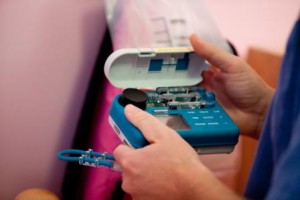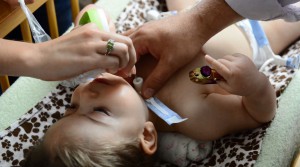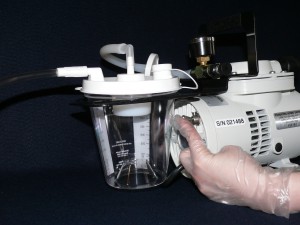Tips to Keep Durable Medical Equipment Functioning Properly
When you count on equipment to keep your child going each day, ensuring that it functions properly is crucial. Who can you count on when your equipment isn’t working properly and needs examination? Look no further than the PHS biomedical team – comprised of equipment cleaners and technicians. They examine and assess every piece of equipment that comes back to the PHS offices from a family’s home, working to verify, and if possible, fix any issues that arise.
We sat down with a member of the biomedical team to talk about the most common issues they see with equipment that comes into PHS. The top two? 1. Food pumps and 2. suction machines. So we gathered a few tips on how to keep them running at their best and what to do if they’re not, so you can keep it running smoothly in your home. (Want more in-depth information on food pumps? Check out this blog post).
What do you do to ensure your equipment functions properly? Leave your tips in the comments section so we can pass them along to other parents and caregivers.
Food Pump
 One of the most common issues is the food pump wheel getting build up on it so it isn’t able to turn the tubing that holds the formula within the pump as well. Be sure to scrub within the pump wheel when cleaning your food pump to avoid this build up.
One of the most common issues is the food pump wheel getting build up on it so it isn’t able to turn the tubing that holds the formula within the pump as well. Be sure to scrub within the pump wheel when cleaning your food pump to avoid this build up.- It’s important to ensure that the area around the sensors (the clear plastic area under the door of the pump) is clear of any particles or build up, as that can affect the food pump’s ability to deliver dosages correctly. If an alarm goes off and says ‘no flow’ or ‘no food’ but you have a bag of formula connected, dirty sensors may be causing the problem. A good method for cleaning them is simply cotton swabs and water!
 If you blenderize your formula, ensure the air bubbles are out of the mixture before starting the food pump – these bubbles will affect the food pump’s ability to use its sensors to calculate the formula.
If you blenderize your formula, ensure the air bubbles are out of the mixture before starting the food pump – these bubbles will affect the food pump’s ability to use its sensors to calculate the formula.- An environmental consideration to keep in mind when using your food pump is the placement of your bag. If it’s too high or too low, that can impact how the formula is being delivered, as it won’t move at the same rate if it is trying to travel up to get to the pump, or is moving quickly down. Food pumps can function well from inside a backpack, similar to how Emily wears hers in the picture to the right.
Suction Machine
 If you’re having issues with your suction machine’s strength, Mike recommends working from the piece furthest from the catheter, which will be attached to the machine itself. Starting with just the machine, turn it on to test the strength of the suction – if it has a strong suction, continue adding pieces back on until you notice the change in suction. This will let you know which piece is causing the issues in suction strength.
If you’re having issues with your suction machine’s strength, Mike recommends working from the piece furthest from the catheter, which will be attached to the machine itself. Starting with just the machine, turn it on to test the strength of the suction – if it has a strong suction, continue adding pieces back on until you notice the change in suction. This will let you know which piece is causing the issues in suction strength. Knowing which part of the equipment is causing the issue can be a huge help in either identifying what you need to replace at home, or in explaining the issue when you call PHS or need to exchange it for the biomedical team to examine.
Knowing which part of the equipment is causing the issue can be a huge help in either identifying what you need to replace at home, or in explaining the issue when you call PHS or need to exchange it for the biomedical team to examine.- Feel like your suction machine is taking a long time to get running up to full strength? It might be because your canister was recently emptied, so there is more ‘space’ for the air to flow through – taking it longer to get to 100% suctioning strength.
Ultimately? You Know Best.
PHS patient families see the equipment operate every day and know when something is not right. The question we want families to ask themselves is, ‘Has anything changed from yesterday? If I changed something what did I change?’ If it’s not an emergency and you have the ability to run through that thought process, it will help tremendously in troubleshooting equipment. Even if we end up swapping it, when you call in, you can let us know ‘I changed this and maybe that affected it’ – it will help greatly when the team is testing your equipment in the biomedical area.
Leave your tips in the comments section so we can pass them along to other parents and caregivers.
Originally published: January 31, 2014

